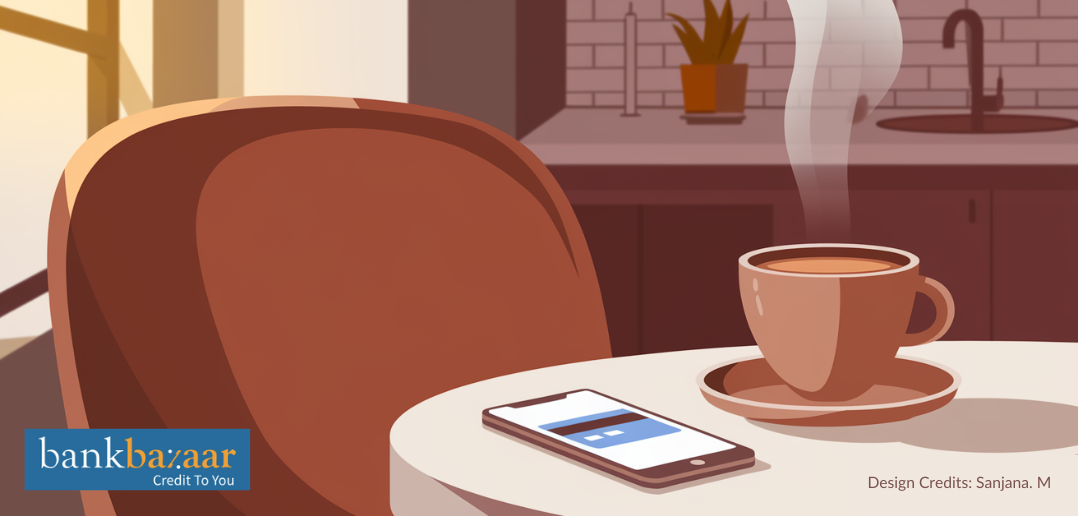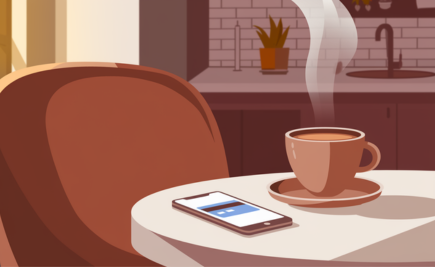On this International Coffee Day, as we breathe in the rich aroma that somehow makes every moment feel a little warmer, it’s hard not to reflect on how deeply coffee has woven itself into our daily lives. What was once just a simple cup in the morning has evolved into something much bigger—it’s a lifestyle, a social ritual, a small indulgence that we don’t think twice about. We gather over filter coffee at the local roadside stall, or sit in a chic café with a latte, lost in conversation or work. But isn’t it amusing how these small, everyday moments can quietly add up?

There’s something about coffee, isn’t there? It’s more than just a drink. Coffee has become such an integral part of our routines that for many of us, it’s practically automatic: we grab a cup on the way to work, meet friends for a mid-morning pick-me-up, or settle into a cosy corner at a café with our laptops, savouring every sip. But have we ever really stopped to think about the financial impact of this beloved habit? I mean, coffee culture is everywhere—it’s woven into our lives in subtle yet significant ways—and it’s having a quiet, ongoing effect on our wallets, too.
The Hidden Costs Of Daily Indulgence
The fact of the matter is, coffee is a small indulgence that can easily slip under the radar. A cappuccino or cold brew at a popular café or even your favourite local coffee spot doesn’t seem like a big deal, right? It’s just ₹200, ₹300 or ₹500 even! Yet, when this becomes a regular habit—day after day, week after week—these small expenses begin to add up. And that’s just you. For people who grab coffee for their partners, co-workers or as part of a social gathering, the costs can skyrocket even faster.
Why Do We Love Coffee Culture?
Why are we so drawn to this ritual in the first place? It’s more than just the caffeine kick, although, let’s be real, that’s a huge part of it. Coffee has evolved into a cultural experience. It’s become a way to connect with others, to take a break from the grind (pun intended), to treat ourselves. Think about how often a conversation starts with, “Let’s get a cup of coffee”. That simple phrase implies so much more than just a drink. It suggests connection, relaxation, even escape from life’s chaos. Coffee is comfort, it’s familiarity.
The Aesthetics Of Coffee Culture
The beautifully crafted cappuccinos, the latte art, the sleek, Instagram-worthy coffee shops—these are all part of the experience, too. We’re not just paying for the drink, we’re paying for the atmosphere, the ambiance, the sense of belonging. It’s not uncommon for people to pick their coffee shops based on vibe alone—places where they can sip a drink, scroll on their phones and feel like they’re part of a scene. And that scene has a price tag.
Evaluating Our Daily Spending
But let’s pause for a second and ponder. While we’re sipping that artisanal espresso, what’s really happening to our finances? That daily cup of coffee (let’s assume it’s ₹250) doesn’t seem like much in isolation, but multiply it by five days a week, four weeks a month and suddenly, you’ve got ₹5,000 vanishing into thin air. Stretch that out over a year and you’re talking about ₹60,000—just on coffee. Now, if someone handed you ₹60,000 at the start of the year and asked, “Would you rather spend this on coffee or save it for something else?”, would you still choose coffee? Or maybe, you’d think twice?
Additional Reading: The Psychology Of Spending: How Fibonacci Can Help Keep Your Budget On Track
The Emotional Connect
Here’s where things get tricky, though. Coffee isn’t just a line item in our budgets; it’s an emotional purchase. Cutting it out feels like deprivation, as if one of life’s simple pleasures is being taken away. And there’s nothing wrong with small indulgences—life is meant to be enjoyed, after all. The real challenge is finding balance. How do we continue to enjoy coffee culture without letting it quietly siphon off too much of our hard-earned money?
Strategies For Mindful Coffee Indulgence
One strategy is to be mindful about when and how we indulge. Instead of making coffee runs a daily habit, we can treat them like special occasions. Save the fancy lattes for Fridays or as a reward for hitting a personal milestone. On regular days, maybe brewing coffee at home can be a viable alternative. With so many at-home brewing options available these days—everything from pour-overs and French presses to espresso machines and filter coffee percolators—it’s possible to recreate a café experience in your kitchen without the high price tag. And let’s not forget, buying your beans in bulk and making your coffee at home can significantly cut costs without sacrificing quality.
-
Rediscover The Ritual Of Home Brewing
Home brewing isn’t just about saving money—it’s also a way to reconnect with the ritual of coffee. There’s something calming about grinding your own beans, boiling water, waiting for the brew. It forces you to slow down, to enjoy the process and that, in itself, can be just as rewarding as sitting in a fancy café. Plus, it allows you to experiment with different beans and brewing techniques. Before you know it, you might find that you’ve become your own barista, and the ₹300 you used to spend on lattes feels less tempting.
-
Leverage Credit Cards Wisely
This is where Credit Cards come into play and surprisingly, they can help balance out the costs if used wisely. Here’s how: rewards and cashback.
Additional Reading: Credit Card Tech: 5 Integrations You Need to Know!
Many Credit Cards offer rewards for everyday purchases, especially dining out and grabbing coffee at cafés. Some cards specifically target restaurants and coffee shops, offering cashback on those purchases. Imagine getting cashback/reward points on every cup of coffee you buy. That means your pricey latte could actually cost you less—and while that might seem like a small difference in the moment, over time, those little rewards add up. If you’re going to spend money on coffee anyway, why not let your Credit Card help you get some of that money back?
Your regular coffee habit could help you accumulate points for future travel, discounts or even free coffees—assuming, of course, that you pay off your balance in full each month to avoid interest.
-
Set A Monthly Coffee Budget
Another tip for balancing coffee culture with your budget? Set a specific coffee fund. If you love grabbing coffee with friends or visiting your local café to work, that’s perfectly fine. But give yourself a monthly coffee budget. When that budget is gone, it’s gone. This way, you can still indulge, but you’re doing so in a way that’s mindful and planned. It’s all about making your coffee spends intentional, rather than automatic.
-
Take Advantage Of Loyalty Programs
Let’s not forget that coffee shops often have loyalty programs, too. If you’re a regular, take advantage of these. They’re a small way to get more for your money, whether through discounts, free drinks or points that accumulate over time. It might not seem like much, but every little bit helps when you’re trying to be conscious of your spending.
Find The Right Balance
In the end, coffee culture isn’t going anywhere and that’s okay. It’s one of those simple pleasures that make life a little bit brighter, a little bit warmer. But like any habit, it’s worth examining from time to time. Is that daily cup of coffee something you’re truly enjoying or is it something you do out of habit? Is it enhancing your life or is it just another expense you don’t think much about? By being mindful of how we engage with coffee culture—by making intentional choices—we can enjoy the best of both worlds: the pleasure of a perfectly brewed cup and the peace of mind that comes from keeping our finances in check.
So, let’s raise our mugs to balance—and maybe a little bit of cashback. Cheers!
Copyright reserved © 2024 A & A Dukaan Financial Services Pvt. Ltd. All rights reserved.


